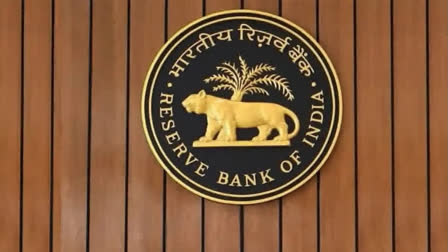Context:
Recently, the Reserve Bank of India (RBI) has retained the State Bank of India, HDFC Bank and ICICI Bank as Domestic Systemically Important Banks (D-SIBs).
More on News
Bucket Allocation: SBI is placed in bucket 4, HDFC Bank in bucket 3, and ICICI Bank in bucket 1, reflecting their varying levels of systemic importance.
Capital Requirements: SBI must maintain 0.80% additional CET1, HDFC Bank 0.40%, and ICICI Bank 0.20% of risk-weighted assets.
- Common Equity Tier 1 (CET1) is a capital measure that represents the highest quality of regulatory capital for financial institutions.
Implementation Timeline: The higher D-SIB surcharge for SBI and HDFC Bank will be effective from April 1, 2025.
About D-SIBs
- Definition: D-SIBs are banks whose size, complexity, and interconnectedness make them crucial for the uninterrupted functioning of the banking system.
- Systemic Impact: Their failure could cause significant disruption to essential banking services and overall economic activity.
- Risk Management: These banks require additional policy measures to deal with systemic risks and moral hazard issues.
- Market Perception: They are perceived as ‘Too Big To Fail’ (TBTF), creating an expectation of government support during distress.
Bucket-Based System: Capital surcharge varies from 0.20% to 0.80% based on bucket placement.
- The Reserve Bank of India (RBI) has categorized banks into five buckets based on their risk profiles and capital requirements:
- This categorization is primarily based on their Additional Common Equity Tier 1 (CET1) ratio to Risk Weighted Assets (RWAs).
- Banks in Bucket 1 must maintain the lowest Common Equity Tier 1 (CET1) capital surcharge, while those in Bucket 5 have to maintain the highest CET1 buffer.
Regulatory Oversight: D-SIBs face enhanced supervision and must maintain higher capital reserves than regular banks.
History
- Framework Introduction: RBI issued the framework for dealing with D-SIBs in July 2014.
- First Designation: SBI was the first bank to be designated as D-SIB in 2015. ICICI Bank was included in 2016, followed by HDFC Bank in 2017.
- Regular Updates: The RBI has been disclosing D-SIB classifications annually since 2015.
Significance
- Financial Stability: D-SIBs play a crucial role in maintaining stability in the banking sector.
- Economic Impact: Their continuous operation is essential for the real economy’s smooth functioning.
- Market Confidence: Their status helps maintain public confidence in the banking system.
- International Standing: D-SIB status enhances these banks’ credibility in global markets.
Selection Criteria and Process
- Size Assessment: Banks with exposure beyond 2% of GDP are considered for D-SIB status.
- Evaluation Parameters: Assessment includes cross-jurisdictional activities, complexity, substitutability, and interconnectedness.
- Two-Step Process: Initial sample selection followed by detailed systemic importance computation.
- Scoring System: Banks are assigned systemic importance scores determining their bucket placement.
- Regular Review: Identification and review process occurs at least every three years.
Benefits of D-SIBs
- Market Advantage: D-SIBs enjoy certain advantages in funding markets due to their status.
- Stable Operations: Enhanced regulatory oversight ensures more stable operations.
- Risk Management: Stronger risk management frameworks protect against failures.
- Systemic Safety: Additional capital requirements create better shock absorption capacity.
- International Recognition: D-SIB status provides recognition in global banking circles.
Way Forward:
- Dynamic Framework: Need for continuous evolution of the D-SIB framework.
- Risk Mitigation: Development of better tools for systemic risk management.
- International Alignment: Harmonization with global banking standards.
- Technology Integration: Enhanced use of technology for monitoring and compliance.
Global SIBs:
- Origin: The idea of Global SIBs came in response to the Global Financial Crisis of 2007-08, with FSB publishing the first list of G-SIBs in 2011.
- Current Status: The 2023 FSB list includes 29 Global Systemically Important Banks (G-SIBs).
- Major Players: Includes institutions like JP Morgan Chase, Bank of America, HSBC, and BNP Paribas.
- Indian Context: Foreign G-SIBs operating in India must maintain proportional CET1 capital.
- International Framework: G-SIBs follow globally coordinated regulatory standards.
Financial Stability Board (FSB):
- Global Coordination: FSB coordinates with national authorities to identify G-SIBs.
- Annual Assessment: Publishes annual lists of G-SIBs based on end-year data.
- Methodology Development: Develops and updates assessment methodologies for systemic importance.
Basel III Norms:
- Basel III norms are a set of international banking regulations.
- Objective: To strengthen the banking sector’s stability and resilience.
- Origin: The norms were developed by the Bank for International Settlements (BIS) in response to the financial crisis of 2007–2008.

